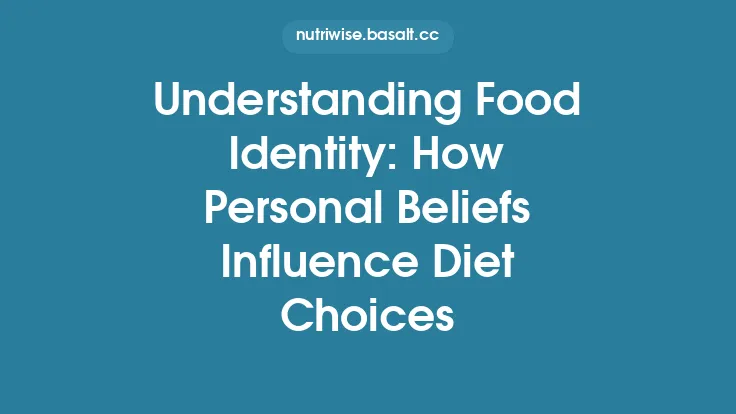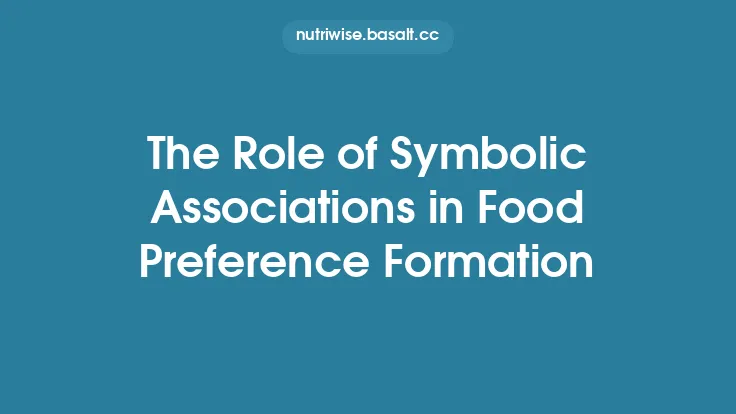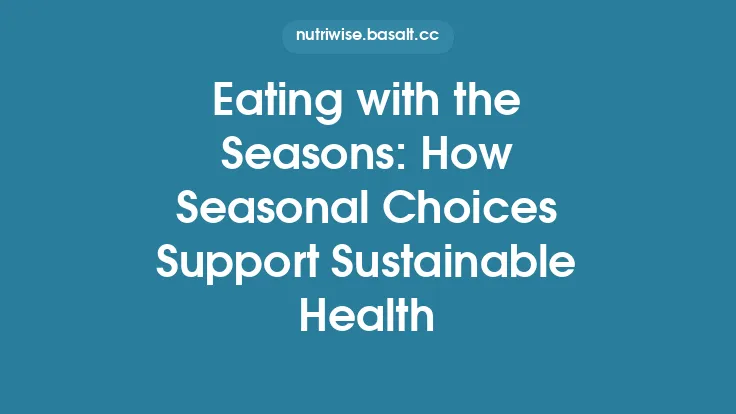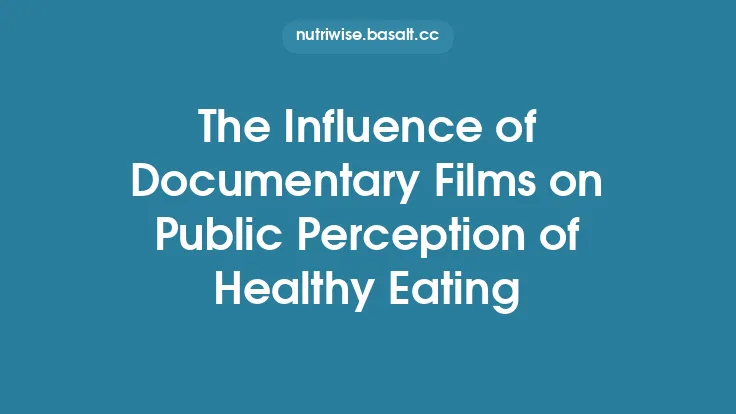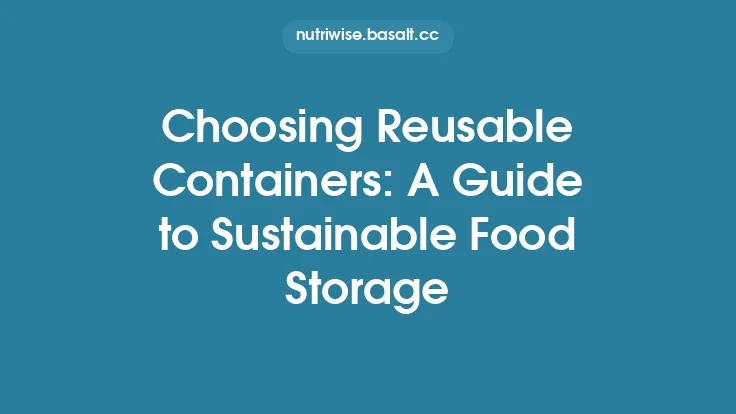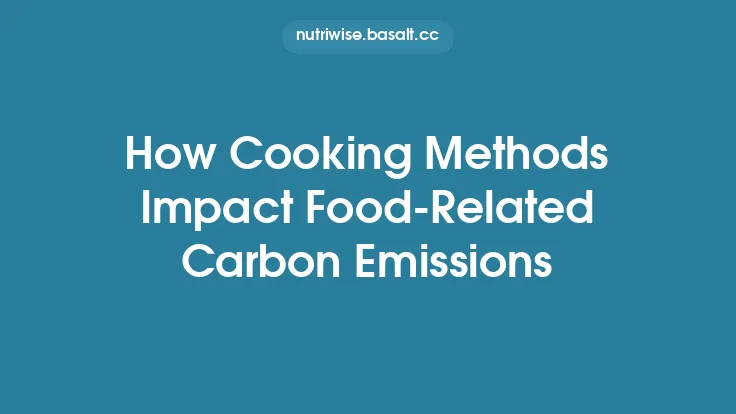Sustainable eating is often framed in terms of carbon footprints, resource efficiency, and nutritional science, yet the stories we tell about food—its origins, its moral weight, its place in the communal imagination—play a decisive role in shaping how societies adopt (or reject) environmentally responsible diets. Across centuries, cultures have woven symbolic narratives around particular ingredients, preparation methods, and consumption rituals. These narratives act as cultural scripts that can either reinforce wasteful practices or inspire stewardship of the planet’s limited food resources. By unpacking the structure of symbolic food narratives and tracing their influence on everyday choices, we can harness a powerful, often under‑utilized lever for promoting sustainable eating habits.
Defining Symbolic Food Narratives
A symbolic food narrative is a culturally transmitted story or set of meanings that attaches moral, spiritual, or communal significance to a food item or a way of eating. Unlike simple food symbolism—which might assign a color or a deity to a fruit—narratives embed the food within a broader storyline: a myth of origin, a cautionary tale, a heroic journey, or a communal covenant. These narratives are encoded in oral traditions, religious texts, folk songs, proverbs, and even contemporary media. They function as cognitive schemas that guide perception, affect emotional attachment, and shape behavioral intentions.
Key characteristics of symbolic food narratives include:
- Temporal Depth – They often span generations, lending a sense of continuity and legitimacy.
- Moral Valence – They embed ethical judgments (e.g., “the humble grain sustains the village” versus “the lavish feast squanders the earth”).
- Social Cohesion – They are shared within a community, reinforcing group identity and collective responsibility.
- Prescriptive Action – They suggest concrete practices (e.g., seasonal harvesting, communal sharing, abstention during certain periods).
Understanding these components is essential for analyzing how such narratives can be aligned with sustainability goals.
Historical Roots of Sustainability in Food Myths
Long before the modern environmental movement, many societies encoded stewardship principles within their food myths. While these stories were not framed in terms of greenhouse gases or biodiversity loss, they nonetheless promoted practices that limited overexploitation.
- Seasonal Guardianship – In several agrarian cultures, myths warned that eating out‑of‑season crops would anger the spirits of the land, leading to famine. This narrative discouraged premature harvesting and encouraged reliance on naturally available produce, thereby reducing the need for storage, transport, and artificial preservation.
- Reciprocal Exchange – Indigenous narratives often describe a covenant between humans and specific animal species, wherein the animal offers its flesh only if the people honor the “gift” through respectful hunting quotas and ritual thanks. Such stories embed a principle of “take only what you need,” aligning with modern concepts of sustainable yield.
- Circularity Tales – Some East Asian folklore portrays the life cycle of rice as a sacred loop: planting, growing, harvesting, and returning the husk to the soil as fertilizer. This narrative reinforces the practice of using agricultural residues as compost, a cornerstone of closed‑loop farming.
These historical narratives illustrate that sustainability can be rooted in cultural meaning long before scientific quantification.
Mechanisms Linking Narrative to Sustainable Behavior
Research in social psychology and cultural anthropology identifies several pathways through which symbolic food narratives translate into concrete eating habits:
- Narrative Transportation – When individuals become mentally immersed in a story, they experience reduced counter‑arguing and heightened acceptance of the story’s moral. A compelling narrative about a community’s downfall due to wasteful consumption can thus lower resistance to adopting waste‑reduction practices.
- Identity Alignment – Symbolic narratives often serve as identity markers. If a community’s identity is tied to “guardians of the forest,” members are more likely to adopt forest‑friendly diets (e.g., reduced reliance on meat from deforested areas) to maintain congruence with that identity.
- Social Norm Internalization – Narratives disseminated through communal rituals (festivals, rites of passage) create observable norms. When a rite celebrates the sharing of locally sourced, plant‑based dishes, participants internalize the norm of preferring local, low‑impact foods.
- Cognitive Framing – Symbolic narratives provide a frame that reinterprets the consequences of food choices. A story that frames food waste as a betrayal of ancestors reframes waste from a neutral act to a moral transgression, prompting behavioral correction.
- Emotional Resonance – Emotions such as reverence, guilt, or pride evoked by narratives can motivate sustainable actions more powerfully than abstract data. A narrative that evokes pride in preserving a sacred river by limiting water‑intensive crops can drive adoption of drought‑tolerant varieties.
These mechanisms suggest that well‑crafted narratives can be as influential as policy incentives in shifting dietary patterns toward sustainability.
Cross‑Cultural Case Studies
1. The “Three Sisters” Narrative (North America)
Among many Indigenous peoples of the Northeastern United States, the “Three Sisters”—corn, beans, and squash—are presented in oral tradition as a harmonious trio that supports each other’s growth. The narrative emphasizes intercropping, soil health, and mutual dependence. Modern sustainability programs have leveraged this story to promote polyculture farming, which reduces the need for synthetic fertilizers and improves biodiversity. Communities that adopt the “Three Sisters” model report lower pesticide use and higher soil organic matter, directly linking the narrative to measurable environmental benefits.
2. The “Kashmir Saffron” Legend (South Asia)
A Kashmiri legend tells of a shepherd who discovered saffron crocuses after following a divine white dove. The story stresses the rarity and sacredness of saffron, encouraging careful harvesting and protection of the fragile ecosystem where it grows. Contemporary producers have used this narrative to justify low‑yield, high‑value cultivation methods that avoid intensive monoculture and preserve alpine meadows. The narrative thus supports a market for sustainably sourced saffron, aligning consumer perception with ecological stewardship.
3. The “Matsutake Mushroom” Tale (East Asia)
In Japanese folklore, the matsutake mushroom is a gift from forest spirits to those who respect the forest’s balance. The tale warns that over‑harvesting will anger the spirits, causing the mushrooms to disappear. This narrative has been instrumental in establishing community‑managed foraging zones where harvest quotas are enforced. Studies show that such zones maintain stable mushroom populations while providing a sustainable income source for local families.
4. The “Bountiful Harvest” Festival (West Africa)
A West African community celebrates an annual festival that recounts the myth of a deity who provides abundant harvests only when the people practice “balanced consumption.” The festival includes rituals of sharing surplus grains with the less fortunate and planting a portion of the yield for the next season. This narrative underpins a cultural norm of food redistribution and seed saving, reducing post‑harvest loss and preserving agrobiodiversity.
These case studies demonstrate that symbolic narratives can be operationalized into concrete practices that align with contemporary sustainability metrics such as reduced greenhouse gas emissions, enhanced soil health, and biodiversity conservation.
Integrating Symbolic Narratives into Modern Sustainability Campaigns
To translate the power of traditional narratives into present‑day interventions, practitioners can follow a systematic approach:
- Cultural Mapping – Identify existing food narratives within the target community through ethnographic interviews, folklore archives, and participatory workshops. This step ensures that interventions build on authentic cultural foundations rather than imposing external stories.
- Narrative Co‑Creation – Collaborate with community storytellers, elders, and youth to adapt or expand narratives so they explicitly incorporate sustainability themes (e.g., climate resilience, resource efficiency). Co‑creation fosters ownership and reduces the risk of cultural appropriation.
- Multimedia Dissemination – Deploy the narratives across channels that resonate locally: oral performances, community theater, radio dramas, visual art, and digital storytelling platforms. Each medium can emphasize different aspects (emotional, informational, procedural) of the sustainability message.
- Ritual Embedding – Integrate the narrative into existing communal rituals (e.g., harvest festivals, religious feasts) to reinforce the message through repeated, socially salient events. Rituals provide a natural context for modeling sustainable practices (e.g., serving plant‑based dishes, limiting portion sizes).
- Feedback Loops – Establish mechanisms for community members to share stories of how the narrative influenced their behavior. These testimonials become new narrative strands, reinforcing the cycle of adoption and adaptation.
- Evaluation Framework – Pair narrative interventions with quantitative metrics (e.g., reduction in food waste, shift in protein source composition) and qualitative assessments (e.g., changes in perceived moral value of sustainable eating). This mixed‑methods evaluation validates the narrative’s impact and informs iterative refinement.
By embedding sustainability within the cultural logic of food narratives, campaigns can achieve deeper behavioral change than information‑only approaches.
Challenges and Ethical Considerations
While symbolic narratives are potent, their deployment must navigate several pitfalls:
- Cultural Sensitivity – Misinterpreting or commodifying sacred stories can alienate the very communities whose cooperation is essential. Practitioners must engage in respectful dialogue and obtain informed consent for any narrative adaptation.
- Narrative Rigidity – Over‑formalizing a narrative may stifle its organic evolution, leading to resistance. Flexibility is needed to allow the story to adapt to new ecological realities.
- Potential for Exclusion – Narratives that emphasize particular foods or practices may marginalize groups with different dietary traditions. Inclusive storytelling should acknowledge diversity within the community.
- Misinformation Risk – Embedding scientific claims within mythic frameworks without proper verification can spread inaccurate information. Collaboration with local knowledge holders and scientists helps ensure factual integrity.
- Commercial Exploitation – Companies may co‑opt narratives for marketing without delivering genuine sustainability benefits, resulting in “greenwashing.” Transparent certification and community oversight can mitigate this risk.
Addressing these challenges requires a participatory, interdisciplinary approach that balances cultural reverence with ecological rigor.
Future Directions and Research Opportunities
The intersection of symbolic food narratives and sustainable eating is ripe for scholarly inquiry. Promising avenues include:
- Neurocognitive Studies – Using functional MRI to examine how narrative transportation influences decision‑making pathways related to food choice.
- Agent‑Based Modeling – Simulating how the diffusion of a sustainability‑oriented narrative impacts community-level consumption patterns over time.
- Cross‑Disciplinary Frameworks – Merging life‑cycle assessment (LCA) data with narrative analysis to quantify the environmental impact of behavior changes prompted by specific stories.
- Digital Storytelling Platforms – Investigating how interactive media (e.g., augmented reality folklore tours) can amplify narrative reach while preserving cultural authenticity.
- Policy Integration – Exploring mechanisms for embedding narrative‑based interventions within national dietary guidelines or climate action plans.
Advancing research in these areas will refine our understanding of how stories can be engineered—ethically and effectively—to foster planetary health.
Practical Takeaways for Practitioners
- Start with Listening – Conduct deep cultural listening to uncover existing food narratives before designing interventions.
- Co‑Create, Don’t Impose – Involve community members in shaping the sustainability message within the narrative.
- Leverage Existing Rituals – Align sustainable practices with familiar communal events to lower adoption barriers.
- Use Multiple Media – Combine oral, visual, and digital formats to reach diverse audience segments.
- Measure Both Story and Impact – Track changes in narrative prevalence (e.g., frequency of sustainability references in local storytelling) alongside environmental metrics.
- Maintain Ethical Guardrails – Prioritize cultural respect, inclusivity, and transparency throughout the process.
By recognizing that the foods we eat are not merely nutrients but carriers of meaning, we unlock a powerful conduit for guiding societies toward diets that nourish both people and the planet. Symbolic food narratives, when thoughtfully harnessed, can transform abstract sustainability goals into lived, culturally resonant practices—ensuring that the story of our meals continues to be a story of stewardship.
